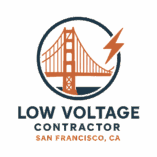How Power over Ethernet (PoE) is Powering San Francisco’s Smart Workplaces
Introduction
Smart workplaces in San Francisco are rapidly evolving, leveraging technology to improve efficiency, collaboration, and sustainability. Power over Ethernet (PoE) is at the forefront of this transformation, enabling networked devices such as IP cameras, VoIP phones, smart lighting, and sensors to operate over a single Ethernet cable.
This article explores how PoE technology is shaping modern offices, its benefits, key applications, and expert insights for implementing PoE in San Francisco’s tech-forward workplaces.
Table of Contents
- What is Power over Ethernet (PoE)?
- Benefits of PoE in Smart Workplaces
- Key PoE Applications in San Francisco Offices
- VoIP Phones
- IP Surveillance Cameras
- Smart Lighting Systems
- Environmental Sensors and IoT Devices
- PoE Standards and Protocols
- Best Practices for PoE Deployment
- Common Challenges and How to Avoid Them
- Future Trends in PoE and Smart Office Technology
- Conclusion and Key Takeaways
- FAQs
What is Power over Ethernet (PoE)?
Power over Ethernet (PoE) is a technology that enables Ethernet cables to deliver both data and electrical power to connected devices. Defined by IEEE standards such as 802.3af, 802.3at, and 802.3bt, PoE eliminates the need for separate power supplies and outlets, simplifying network installations and often working alongside fiber optic cabling to ensure high-speed connectivity and reliable performance.
Expert Insight: According to Cisco, PoE reduces installation costs by up to 50% for devices like IP phones and access points.
Benefits of PoE in Smart Workplaces
- Simplified Infrastructure: Fewer cables and outlets streamline office layouts.
- Cost Savings: Reduced electrical wiring and lower energy consumption.
- Flexibility: Devices can be easily moved or reconfigured without rewiring.
- Scalability: Supports expanding networks with minimal disruption.
- Safety and Reliability: IEEE-compliant PoE standards prevent overloading and overheating.
Statistic: A 2023 TechRepublic survey reported that 64% of San Francisco tech offices adopted PoE for at least one category of devices.
Key PoE Applications in San Francisco Offices
VoIP Phones
- Centralized power delivery reduces the need for individual power adapters.
- Supports advanced features like video calling and unified communications.
IP Surveillance Cameras
- Enables strategic placement without relying on nearby power outlets.
- Integrates with smart security systems and remote monitoring solutions.
Smart Lighting Systems
- PoE-driven LED lighting allows centralized control and energy efficiency.
- Supports automated schedules, occupancy sensors, and daylight harvesting.
Environmental Sensors and IoT Devices
- Air quality, temperature, and motion sensors operate over PoE networks.
- Facilitates data-driven workplace optimization and sustainability initiatives.
PoE Standards and Protocols
- IEEE 802.3af (PoE): Up to 15.4W per device, ideal for phones and small cameras.
- IEEE 802.3at (PoE+): Up to 30W per device, supports PTZ cameras and access points.
- IEEE 802.3bt (PoE++): Up to 90W per device, suitable for lighting systems and high-power devices.
Expert Tip: Selecting the right PoE standard ensures device compatibility and future-proofing for workplace expansion.
Best Practices for PoE Deployment
- Conduct a network assessment to determine power and data requirements.
- Use PoE switches with adequate wattage and port capacity.
- Maintain proper cable quality (Cat5e or Cat6) for reliable power transmission.
- Implement surge protection to safeguard devices.
- Monitor energy consumption for optimization and efficiency.
Common Challenges and How to Avoid Them
- Overloading Switches: Calculate total power needs before installation.
- Heat Dissipation: Ensure proper ventilation for PoE switches and cables.
- Distance Limitations: PoE is effective up to 100 meters; consider midspan injectors or repeaters for longer runs.
- Device Compatibility Issues: Verify that all devices comply with the same PoE standards.
Future Trends in PoE and Smart Office Technology
- Higher-Power PoE++ Devices: Supporting advanced LED lighting, digital signage, and collaborative hardware.
- Integration with AI and IoT: Automated building management systems for smarter workplaces.
- Energy-Efficient PoE: Innovations targeting sustainability and green building certifications.
- 5G and Edge Computing Integration: Enhanced connectivity for mobile and remote PoE devices.
Conclusion
Power over Ethernet is powering the next generation of smart workplaces in San Francisco, providing simplified infrastructure, cost efficiency, and scalable solutions for offices. By leveraging PoE and integrating it with structured cabling, businesses can deploy devices strategically, optimize energy consumption, and create flexible, tech-enabled environments.
Actionable Advice: Assess your office’s power and network needs, select the correct PoE standards, and partner with certified installers to ensure safe and reliable deployment.
FAQs
Q1: What is the maximum distance PoE can cover?
Up to 100 meters (328 feet) for standard Ethernet cables.
Q2: Can PoE power high-wattage devices like lighting systems?
Yes, PoE++ (802.3bt) can deliver up to 90W per port.
Q3: Do all devices require PoE injectors or special switches?
Devices must be PoE-compatible; switches or midspan injectors provide the necessary power.
Q4: How does PoE support smart building initiatives?
PoE powers IoT devices, sensors, lighting, and cameras, enabling centralized control and energy efficiency.
Q5: Is PoE safe for office environments?
Yes, IEEE standards prevent overloading, overheating, and electrical hazards.
